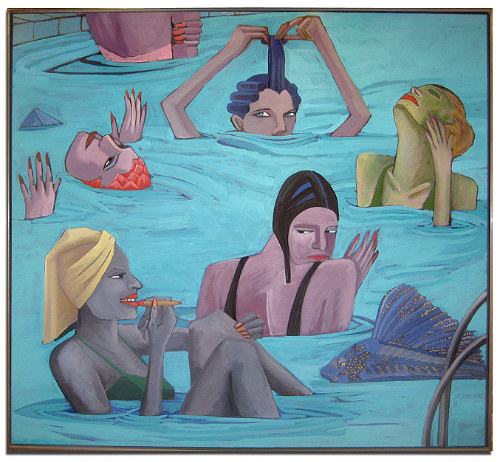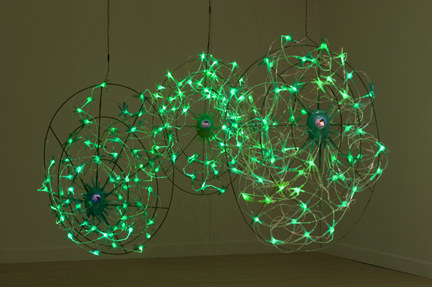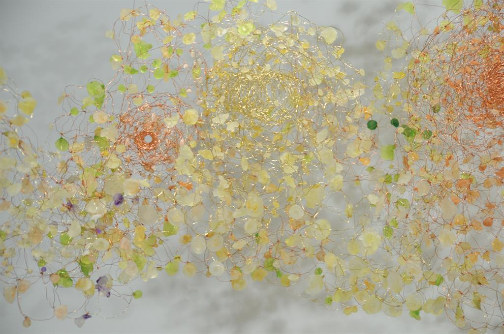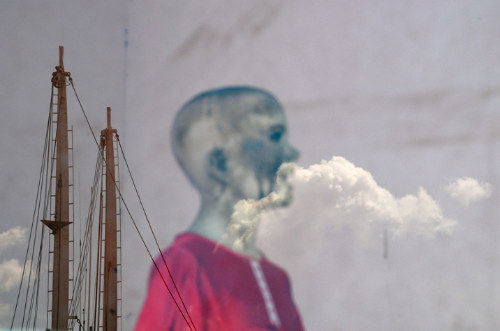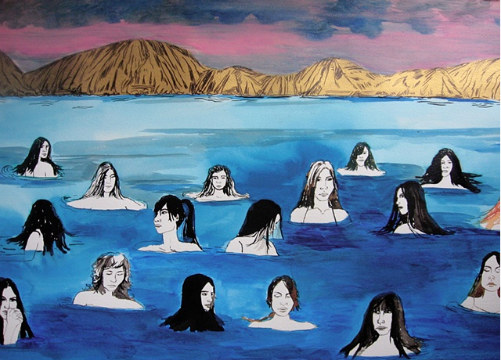
Archives for September 2010
Lisbeth Salander as dancer Zoe Scofield
If Zoe Scofield were a fictional character, she would be Lisbeth Salander, who made her debut in The Girl With the Dragon Tattoo.
It’s not the physical resemblance, although it’s striking:
(images, Juniper Shuey)
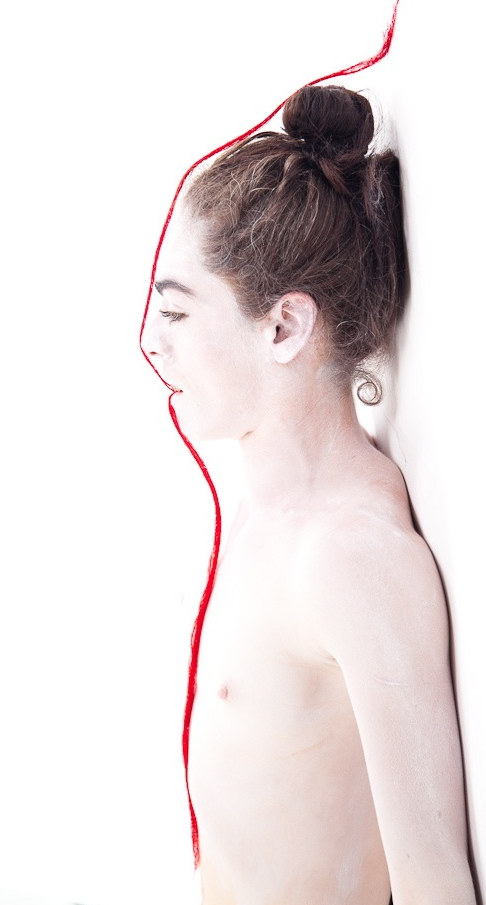 It’s the meaning of their movements,Salander in a boxing ring, Scofield on stage. Scofield never would have made it as a ballet dancer, she says in the video below, because she “couldn’t stay in line.” Any line other than her own. She is light on her feet but owns the floor. Gravity
It’s the meaning of their movements,Salander in a boxing ring, Scofield on stage. Scofield never would have made it as a ballet dancer, she says in the video below, because she “couldn’t stay in line.” Any line other than her own. She is light on her feet but owns the floor. Gravity
loves her without being able to contain her. When she jumps, she hangs
in the air, feet extended and slightly curved, fingers flared. When she crouches, she’s a menace to society.
Scofield is married to artist Juniper Shuey, with whom she collaborates in videos, photos and stage settings. (Their website, Zoe/Juniper, here.)
 At the MacDowell Colony for the last two months, he created a series of photos that present the Scofield as a sexless series of white shadows in a wood. There’s a hint of Matthew Barney in the ritualized ceremony, but Shuey is indie-rock to Barney’s opera, low rent to high palace.
At the MacDowell Colony for the last two months, he created a series of photos that present the Scofield as a sexless series of white shadows in a wood. There’s a hint of Matthew Barney in the ritualized ceremony, but Shuey is indie-rock to Barney’s opera, low rent to high palace.
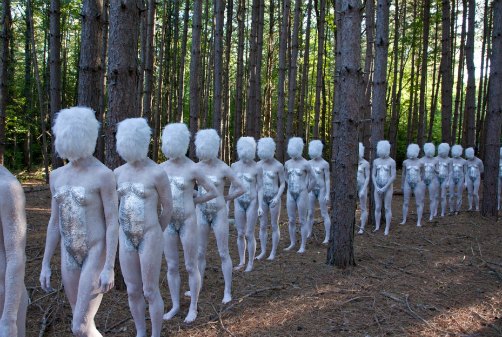 To his interest in what it means to live in a body, Shuey contributes a haunted unease, an inability to connect. The gap between him and other people equals the gap between him and himself. He involves the audience in his perceptual play, shrouding visitors in doubt the way fog rolls over the moors when Sherlock Holmes walks on them.
To his interest in what it means to live in a body, Shuey contributes a haunted unease, an inability to connect. The gap between him and other people equals the gap between him and himself. He involves the audience in his perceptual play, shrouding visitors in doubt the way fog rolls over the moors when Sherlock Holmes walks on them.
Gerri Sayler – drawing glue
In the early ’60s, kids who sniffed the ink on mimeograph paper switched to glue. While it still meant stuck-on-you, it acquired a penumbra of the outcast otherworldly. Titled Nascent, Gerri Sayler‘s transparent, kinky, hot-glue strands hang in the air in Suyama Space like cloud tendrils. They are neither metaphors for sexual attraction nor reminders of the functional, but there is a hint of lives wasted. If they were ribbons, they’d be the kind purchased straight that bounce back curly when run along a knife’s edge. That, or unraveling lace.
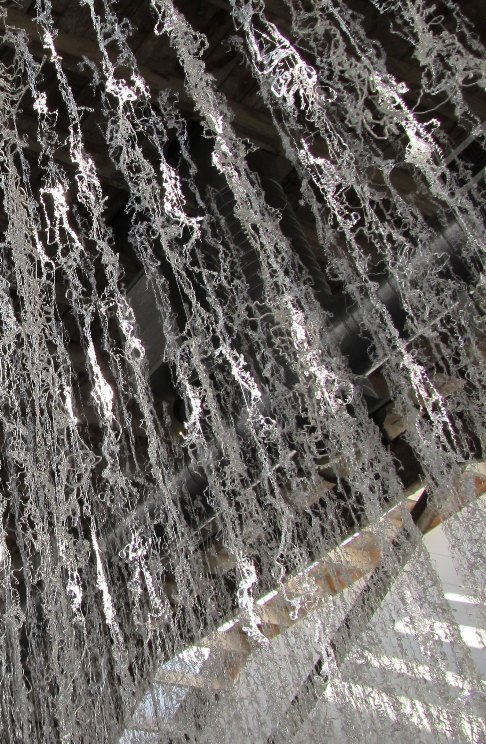 More than 2,000 strands make an overhead cove in the gallery space. Each one is a vertical drawing, a dissolute calligraphy lost in the chorus of its fellows.
More than 2,000 strands make an overhead cove in the gallery space. Each one is a vertical drawing, a dissolute calligraphy lost in the chorus of its fellows.
Diaphanous membranes are having their moment. It would be nice to see a range of them in one place, including, for example:
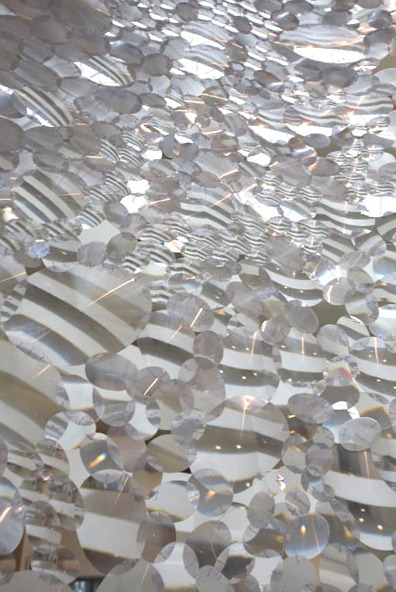 Lead Pencil 6 Columns, 2006 Government grey nylon 12 x 18 x 1 feet Edition of 3
Lead Pencil 6 Columns, 2006 Government grey nylon 12 x 18 x 1 feet Edition of 3
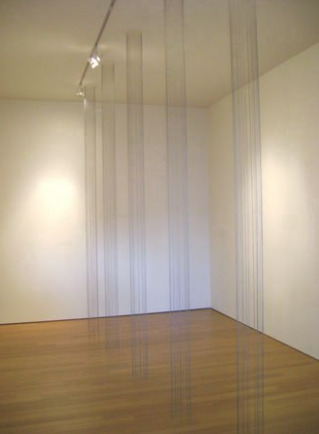 Victoria Haven DOUBLE OR NOTHING (white variant), 2008
Victoria Haven DOUBLE OR NOTHING (white variant), 2008
Cut steel with white powder coating and fasteners
27 x 25 x 1.75 inches
Variable edition of 6 (2 variants in each of 3 finishes)
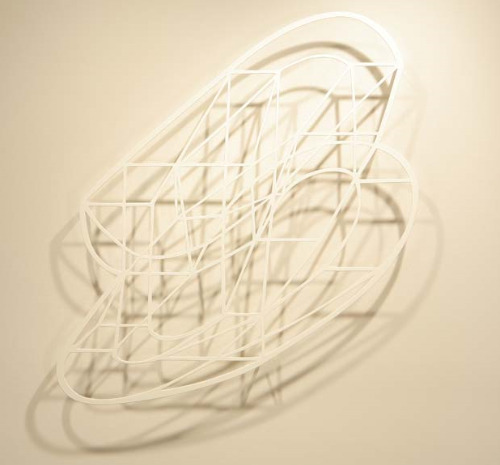 Teresita Fernandez
Teresita Fernandez
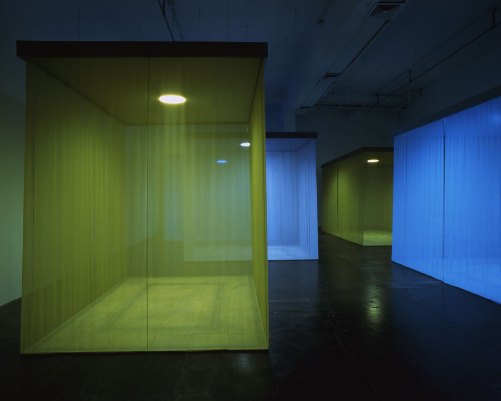 Deborah Ascheim
Deborah Ascheim
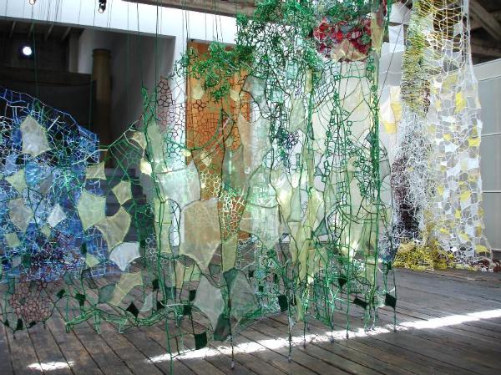 Beth Sellars would be an excellent choice to curate it. Of the 8 artists shown above, she has featured five at Suyama Space.
Beth Sellars would be an excellent choice to curate it. Of the 8 artists shown above, she has featured five at Suyama Space.
Gerri Sayler at Suyama through Dec. 17.
Ryan Horvath – foot fetish, continued
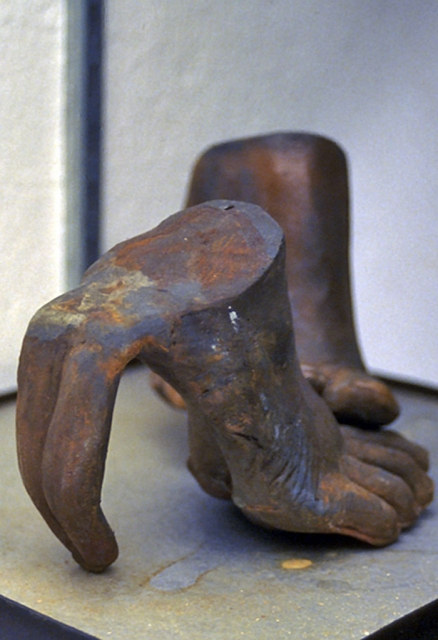 Previous. Horvath is currently in a show at Klemens Gasser & Tanja Grunert, Inc.
Previous. Horvath is currently in a show at Klemens Gasser & Tanja Grunert, Inc.
Andrew Miksys – from Seattle to Lithuania
Wherever he lives – from Seattle but of Lithuanian heritage and largely in residence there in recent years – Andrew Miksys finds worlds inside the world.
Here or there, he connects.
His greatness lies, I believe, in the extraordinary swiftness with which he establishes a relationship with his subjects, a relationship that is unfailingly empathetic.
While still based in Seattle but traveling around the country, Miksys concentrated on bingo, where he has roots. He won his first game at 11, collecting the impressive sum of $280, and in high school delivered a newspaper his father published, Bingo Today.
Lipstick, New Orleans, 1997
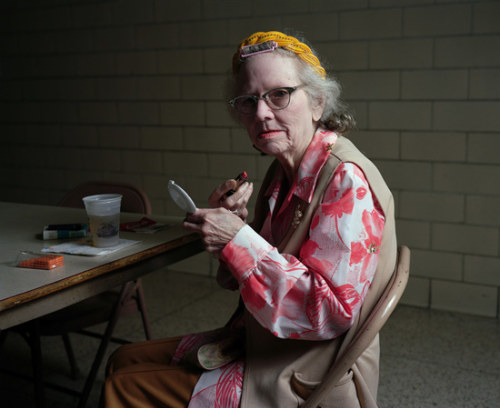 Hickey, Seattle 1997
Hickey, Seattle 1997
 In 2007, he published a book of portraits featuring Lithuanian Roma titled, BAXT, which is a Romani word for destiny, fate or fortune.
In 2007, he published a book of portraits featuring Lithuanian Roma titled, BAXT, which is a Romani word for destiny, fate or fortune.
Rustam, Lithuania 2006
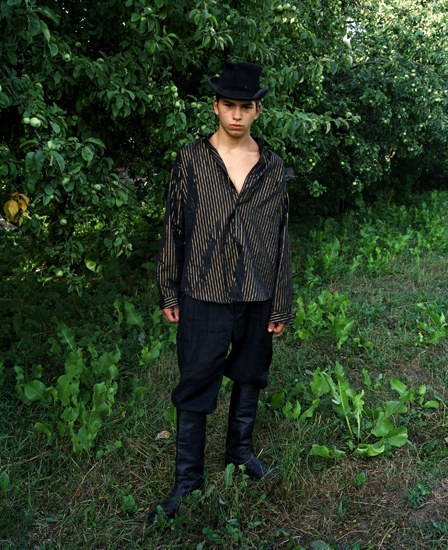 Miksys:
Miksys:
This week my BAXT series
about the Roma (Gypsies) of Lithuania will be shown at FOTOHOF in
Salzburg (Austria) and the Vilnius Contemporary Art Centre (Lithuania).
At Fotohof I am excited to be showing with Ugnius Gelguda and Indre
Serpytyte in an exhibition entitled TRYS (Trys=Three). In Vilnius I will be taking part in the “Lithuanian Art: 2000-2010: Ten Years”
exhibition, a retrospective of Lithuanian art produced in the last
decade.
documentation of how some were transformed in the hands of his subjects.
Miksys:
During the time I was taking portraits of people for BAXT, I gave them copies. Then I also gave away books. When I revisited them much later on, I was astonished to see how they had altered my photographs and displayed them in their homes. Some had ripped their image from the book and hung it up in their living room or bedroom.
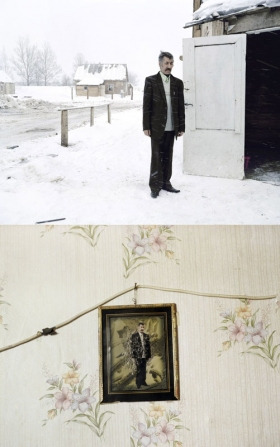
Zoe Strauss & Melville
Two American classics:
Herman Melville’s Moby Dick, opening sentence:
Whenever I find myself growing grim about the mouth; whenever it is a damp, drizzly November in my soul; whenever I find myself involuntarily pausing before coffin warehouses, and bringing up the rear of every funeral I meet; and especially whenever my hypos get such an upper hand of me, that it requires a strong moral principle to prevent me from deliberately stepping into the street, and methodically knocking people’s hats off–then, I account it high time to get to sea as soon as I can.
Charles LeDray in Boston (not coming to Seattle)
Charles LeDray debuted in Boston with a solo show at the ICA through Oct. 17. Sebastian Smee in the Boston Globe loved it:
LeDray is one of contemporary art’s brightest stars, and this show, organized by the ICA’s Randi Hopkins, is the most beautiful, poignant, and witty show the ICA has mounted since moving to its new waterfront home in 2006.
LeDray treats clothes as surrogates for human identity, particularly male identity, and for the many types of work that go into constructing it. As such — and unlike the fashion industry, which is founded on an unblinking faith in the potential of clothes to communicate power, beauty, and self-worth — his work is intensely alive to the pathos clothes can communicate, and to the many senses in which they just don’t . . . quite. . . fit. (more)
LeDray’s workworkworkworkwork travels to the Whitney Museum of American Art (the entire third floor, November 18, 2010-February 13, 2011) and the Museum of Fine Arts, Houston (dates TBA). Although LeDray comes from Seattle and was a guard at the Seattle Art Museum, his exhibit is not scheduled for a Northwest stop.
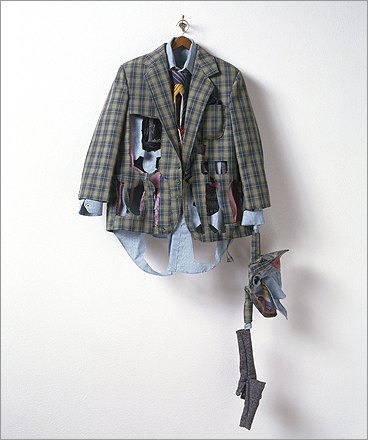
Ellen Lesperance wins Betty Bowen
From Portland. I’ve never heard of her, and her website is mysterious – all flash, little info. Administered by the Seattle Art Museum, the Betty Bowen Award goes annually to a Northwest artist. The top prize is $15,000. Two runner-up awards for $2,500 go to Elias Hansen and Barbara Sternberger.
Oct. 21, 6-7 p.m., there’s a reception for the three artists at SAM, followed by artists’ talks, 7-8. Free admission.
This image, filed under “writing,” is on her website. May or may not be her work. I like it either way, as the illusion to which the image refers is in all senses threadbare.
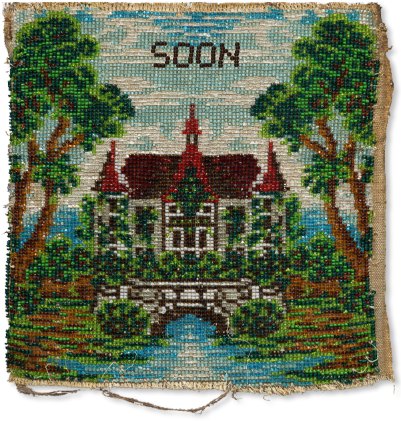
John Bankston – folk incrustations
In my family, making something out of anything but words was a waste of time. Lumpy clay bowls and crayon drawings brought home from school were considered childish aberrations, akin to picking your nose and eating it.
John Bankston comes from another tradition. He drew his way into the world and hasn’t, as an adult, shaken off the magic of turning a blank into an image or a lump of clay into a man.
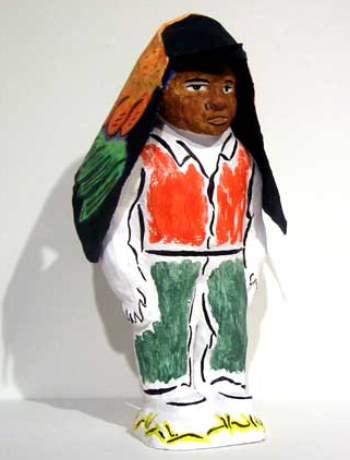 Following Glenn Ligon …. (Image via)
Following Glenn Ligon …. (Image via)
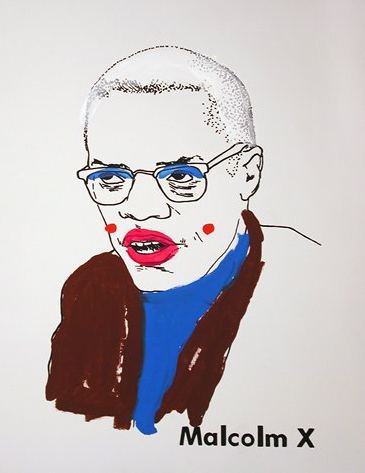 …Bankston investigates the push-pull of African-American traditions through the prism of a coloring book, minus, of course, the book. The weight of cultural assumption trails his figures like a suspicious clerk in a grocery store.
…Bankston investigates the push-pull of African-American traditions through the prism of a coloring book, minus, of course, the book. The weight of cultural assumption trails his figures like a suspicious clerk in a grocery store.
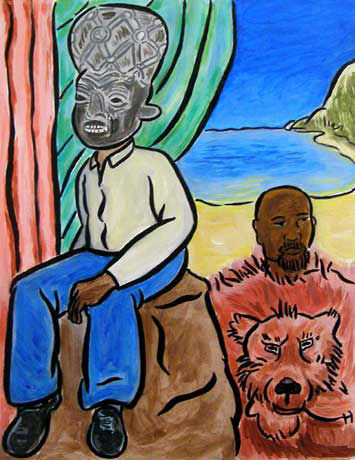
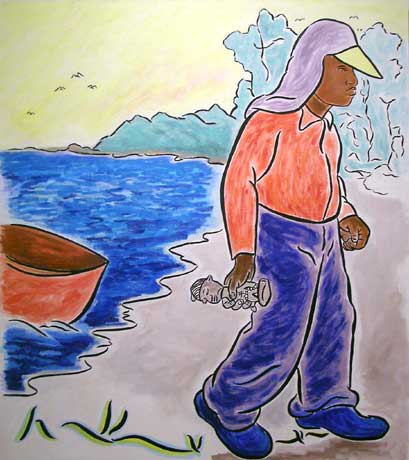 In his jaunty fun-house mirror, tragedy causes the distortions.
In his jaunty fun-house mirror, tragedy causes the distortions.
At James Harris through Oct. 9.
Hint for old journalism in new world
Considering that the online-only Seattle PI is such a streamlined and staff-starved operation, celebration ensues when it manages to deliver any journalism at all. On the site, Vanessa Ho’s elegant boiler-plate story about Seattle Opera‘s financial challenges nailed every aspect of what/when/why but failed to create any sense of who. Who is Seattle Opera, and why should anyone care about its fate? This failure accounts for the low quality of the comments, most of them either begrudging or outright hostile to the idea that the city extend any assistance.
This sentence stood out:
The (Seattle City Council) committee obviously was supportive of the opera and Seattle Center, but councilmember Sally Bagshaw said she wanted to ensure the deal would provide specific public benefits, such as vocational opportunities.
What an anti-art toad Bagshaw is. Art is not, for her, its own excuse. It has to provide socially redeeming value to earn support. Vocational opportunities? Why not reading groups for gang members and stage sets that reduce global warming?
Journalism tells stories. Even on deadline, even if, in Jonathan Lethem‘s phrase, it has to tell its story walking, it can’t afford to skip a crucial part of the plot.



